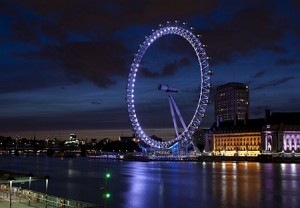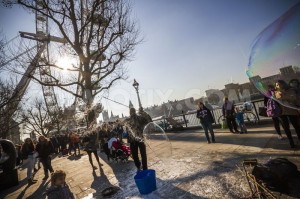Overview of borough
Lambeth is a dynamic and culturally diverse borough in central London. Extending from the South Bank and Waterloo in the north to Streatham Common and Norwood in the south, Lambeth has changed over the last 100 years from a group of suburbs to one of the most eclectic and vibrant boroughs in the country.
Lambeth’s key areas
 The South Bank is a global cultural and business quarter. The area is home to BFI IMAX, international companies such as Shell and ITV and contains the major transport hubs of Vauxhall and Waterloo, London’s busiest station. The UK’s most popular paid tourist attraction is the nearby London Eye. The South Bank has benefited from significant private and public investment.
The South Bank is a global cultural and business quarter. The area is home to BFI IMAX, international companies such as Shell and ITV and contains the major transport hubs of Vauxhall and Waterloo, London’s busiest station. The UK’s most popular paid tourist attraction is the nearby London Eye. The South Bank has benefited from significant private and public investment.
Brixton is at the heart of Lambeth and a major destination. It is famous for its entertainment venues, such as the O2 Academy, the Ritzy cinema and Windrush Square. Brixton is at the forefront of media and culture and is the home of the Black Cultural Archives, several galleries and Brixton market. The Future Brixton masterplan sets out our vision for improvements to the area in a way that ensures sustainability and retains the unique character of Brixton.
Clapham has long been popular with young professionals, drawn by the good transport connections to central London and the vibrant night-time economy. The High Street’s restaurants, pubs and clubs attract visitors from across London, as do sport and live music events on Clapham Common. The area will benefit from new housing along with health care, leisure and community facilities as part of the Future Clapham scheme, due to be completed by the end of 2011.
Stockwell is home to people from many different cultures. Known locally as Little Portugal, Stockwell has one of Britain’s largest Portuguese communities, many originating from Madeira. Stockwell has benefited from £17.5 million of funding as part of the URBAN II European programme.
Streatham has had the fastest population growth of any of Lambeth’s town centres over the past decade. At the same time, it has become more diverse with a large Somali community in Streatham South and a Polish community in Streatham Vale. Streatham is best known for its long high road – nearly two and a half kilometres of shopping opportunities – it is the longest high road in Europe. The Future Streatham masterplan was approved in July 2009 and will direct development in the area.
Norwood is an ambitious area that boasts the only industrial activity in Lambeth. It is home to the South London Theatre, founded in 1967 in an old Victorian fire station. A key project of the Future Norwood masterplan is the redevelopment of Norwood Hall into a state-of-the-art joint service centre providing health and well-being facilities.
Lambeth’s workforce
Lambeth’s greatest asset is its people, a growing resource of creative and aspiring individuals. In 2008 the borough had a population of 275, 000, with the figure for 2010 predicted to be 290,000.
Lambeth is a young borough – 72% of the population are of working age. In fact, 53% of Lambeth’s residents are aged between 20 and 44. In Clapham, some 75% of residents are under 45 years old.
What’s more, Lambeth’s large labour supply is equipped with the skills for future growth. Over half of the working-age population is qualified to NVQ3 or above, exceeding the average across Great Britain. Lambeth’s young workforce has the tenacity and willingness to adapt to the needs of a changing economy.
Lambeth’s economy
The borough has a very large economy, ranked 8th in London and 26th in Great Britain. Lambeth is underpinned by high levels of productivity, knowledge-driven jobs and enterprise.
It has approximately 10,700 businesses, plus an estimated 14,600 self-employed individuals. Small and Medium Enterprises (SMEs) and micro-businesses dominate Lambeth’s economy, with the majority of businesses who took part in the 2009 Lambeth Business Survey having 1-4 employees.
Approximately 156,400 people (78%) in Lambeth are economically active. The vast majority of Lambeth’s employees (95%) work within the service sector; including jobs in the hospitality industry, finance, IT and education.
A key feature of the local economy is the financial importance of the South Bank. The North Lambeth area, including the South Bank attractions and Waterloo station, accounts for almost half of employment in the whole borough. Most of Lambeth’s large private companies are located here and the South Bank attracts around 25 million visitors each year.
borough. Most of Lambeth’s large private companies are located here and the South Bank attracts around 25 million visitors each year.
Transport
Lambeth is extremely well connected with the rest of London and the UK by public transport. Waterloo, Vauxhall and Brixton are all key interchanges. There are plans to extend the East London line into Lambeth at Clapham High Street, due to be complete in 2012. In total, there are 14 rail and nine Underground stations.
Lambeth is easily accessed via road, with major routes directly into central London and a road network that links London with Brighton. Lambeth is centrally located, but over three quarters of the borough is outside of the Congestion Charge zone.
Lambeth’s sustainable travel options include an ever-expanding network of cycle routes and will soon include the London Cycle Hire scheme. You will be able to pick up a cycle at a docking station, use it as you like, and then return it to any docking station. Proposed locations for docking stations include Lower Marsh, Albert Embankment and Vauxhall station. More information can be found on the TfL website: www.tfl.gov.uk/cyclehire.
Lambeth businesses can get help with transport issues through the Lambeth Business Travel Network (LBTN). LBTN is a free forum to help businesses raise transport concerns – such as travel costs, parking and environmental sustainability – and find help to reduce their impact. A joint initiative between Lambeth Council, TfL and local businesses, LBTN also provides access to resources on transport guidance, including funds and grants. For more information call 020 7926 0686 or email travelplans@lambeth.gov.uk.
Lifestyle and culture
Arts
The South Bank Centre hosts world-class music, dance and literature events. It is the UK’s largest arts centre and sits in the midst of London’s most vibrant cultural quarter, alongside the National Theatre and BFI Southbank. The site, home to the Royal Festival Hall, Hayward Gallery and Queen Elizabeth Hall has an extraordinary creative and architectural history and is one of Europe’s busiest tourist destinations. Theatres in Lambeth include the Old Vic and Young Vic while borough residents have included William Blake, Vincent van Gogh and Charlie Chaplin.
History
Opposite the Houses of Parliament, Lambeth Palace is the London residence of the Archbishop of Canterbury and has been the home of successive Archbishops since the thirteenth century. Westminster bridge was opened in 1750 and marked the beginning of major development in Lambeth. West Norwood boasts an impressive Victorian Cemetery, opened in 1837. It has 65 Grade II and Grade II* listed monuments and includes memorials to Mrs. Beeton, Sir Henry Doulton and Sir Henry Tate.
Markets
Lambeth’s markets are bustling with entrepreneurial activity and bursting with enticing wares. Lower Marsh has operated as a street market and centre for local shopping since the mid-nineteenth century. In recognition of its special character, it is a designated conservation area. Brixton is home to the borough’s most famous market with over 300 stalls it is the site of the largest Caribbean food market in Europe. Trading dates back to the 1870s and the area is home to Electric Avenue, the first street in the UK to be lit by electric lighting.
Sport
Sports venues in Lambeth include the Brit Oval, home to Surrey County Cricket Club since 1845. In 1880, the Oval became the first ground in Britain to host international Test cricket when England played Australia. Fittingly, the Oval was the backdrop to England’s 2005 and 2009 Ashes victories.
Parks

Lambeth boasts over 64 of London’s best known parks and open spaces. Clapham Common hosts concerts, theatre and film shows and competitive sports – attracting visitors worldwide all year round. Historic Brockwell Park is home to Lambeth’s annual Country Show, which is one of the highlights of London’s cultural calendar. Brockwell Park Lido has been a much-loved landmark since 1937 and has recently been painstakingly restored and improved with modern amenities.
Business Support
Lambeth First’s vision
Lambeth First, our Local Strategic Partnership, has three main economic priorities for the borough:
- Increasing inward investment
- Improving skills and tackling worklessness
- Supporting business growth.
Encouraging enterprise is crucial to the borough’s prosperity. This is why, with the support of our partners, we will continue to promote Lambeth as a place for business, support existing and emerging businesses and improve the environment for business.
Email: info@lambeth.gov.uk
Web: www.lambethfirst.org.uk
Lambeth Business Desk
The Lambeth Business Desk is our referral and advice service. Now Customer First accredited, it is designed to cut through red tape and help local businesses get the advice they need. A wide range of information is available, including access to finance and how to apply for a business loan, inward investment and support for specific business types.
Tel: 020 7926 3032
Email: businessdesk@lambeth.gov.uk
Web: www.lambeth.gov.uk/businessdesk
For more information on doing business in Lambeth please Click Here